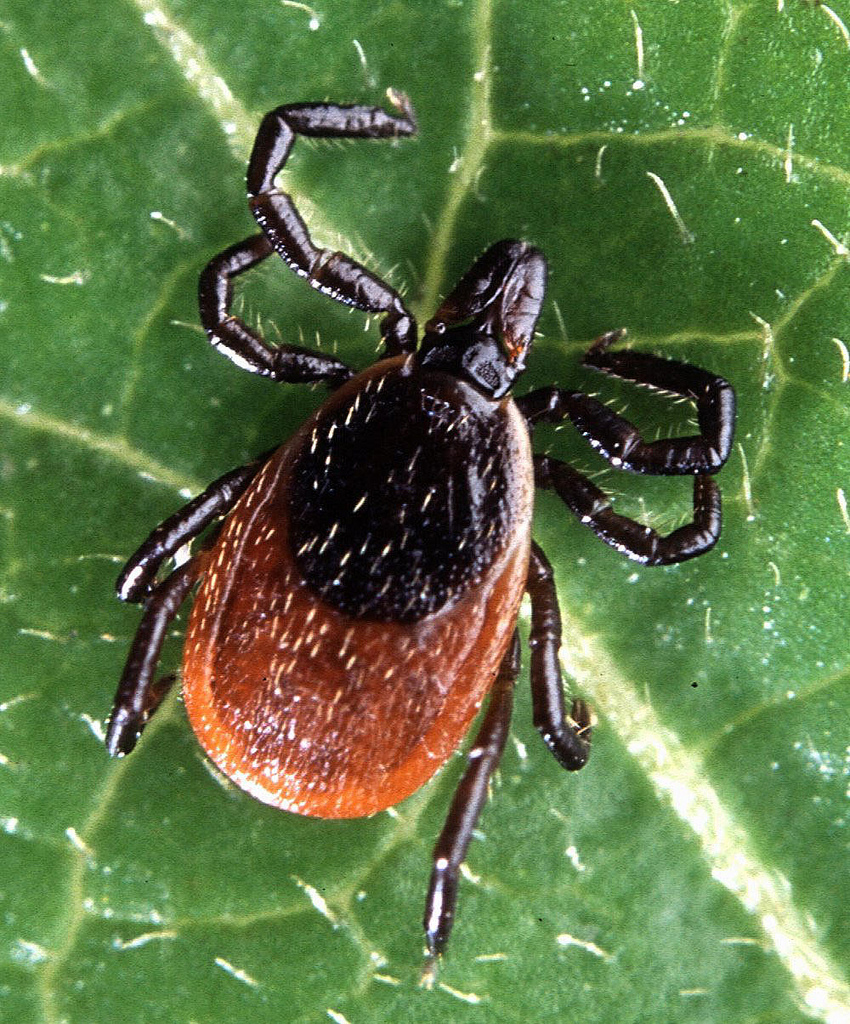Protecting Yourself from Lyme Disease

It’s that time of year again when everyone is itching to get outside and enjoy the fresh air. Summer activities like hiking and gardening are beneficial for your health, but also come with the potential for contact with ticks, which can transmit Lyme disease.
Lyme disease is transmitted to humans through the bite of an infected black-legged tick, and is common in our geographic area. While it takes a tick 24 to 36 hours of attachment to a person to transmit the disease, the vast majority of people who get Lyme do not recall being bitten by a tick. It is therefore important to know the early symptoms of Lyme disease, as early detection and treatment that offers the best chance at a cure.
50 to 80 percent of individuals with Lyme disease will develop a rash, usually at or near the site of the tick bite, within three to 30 days. This rash is called “erthema migrans” and is a painless red area, usually larger than two inches, which may expand and develop a central clearing (giving it the appearance of a bullseye). If you see a rash like this on you or your child, see your doctor for treatment. This rash is diagnostic and blood testing for Lyme disease is not necessary. A course of antibiotics will usually cure this early Lyme disease. In other infected individuals, there may be flu-like symptoms. Untreated, Lyme disease can cause problems with nerves, the heart, and joints. People with symptoms related to these systems should see their doctor, as further workup including blood tests may be needed. The best way to prevent Lyme disease is to prevent contact with ticks.
Prevent Tick Bites
- Avoid wooded areas, high grass, leaf litter and bushes.
- If you’re hiking, walk in the center of the trail.
- When you come indoors, check your clothing for ticks and remove any that you find; placing clothes in the dryer for one hour on high heat also effectively kills ticks.
- As soon as possible after being outside, check your body for ticks. Be especially vigilant about checking underarms, in and around ears, inside the belly button, backs of knees, in hair, between legs, and around the waist.
- Studies have shown that taking a shower within two hours of being outside can reduce your risk of tick bites by washing off any unattached ticks.
- Use tick control remedies to prevent your pets from bringing ticks into the house. Check with your veterinarian to determine the most effective tick collar, spray, shampoo, or “top spot” medication for your pet. Check your pets daily for ticks just like you would yourself or your children.
- Use an insect repellent: Always follow the label’s instructions, especially when applying repellents to children. Try to use repellent on clothes, rather than directly on skin. Choose a repellent that specifically indicates that it is formulated to repel ticks.
- When you’re playing, camping, hiking, working, or otherwise outside in a grassy or wooded area, try to wear a hat, long-sleeved shirt, and long pants. If you can, tuck the legs into your socks. Also, it’s easier to see ticks on lighter-colored clothes.
Create a Tick-proof Zone Around Your House
No landscape is going to be completely tick-proof if you live in an area where ticks are prevalent, but there are some simple things you can do to decrease the likelihood of ticks on your property:
- Keep your yard and the areas around your home clear of leaf clutter; clear tall grass and brush.
- Use wood chips or gravel to separate lawns or wooded areas from play areas.
- Consider consulting a professional pest control technician to apply a chemical control agent.
- Remove vegetation that attracts deer, and construct physical barriers (like fences) to keep deer out of your yard.
How to Properly Remove a Tick
If you discover a tick on your body, it is important to remove it as soon as possible in order to reduce the likelihood of contracting Lyme disease.
- Use a fine-tipped tweezer and grasp the tick as close to the surface of the skin as you can (like you would for a splinter).
- Using steady, even pressure, pull the tick upwards. Don’t twist or jerk the tick, as that can cause it to break.
- Once the tick has been removed, clean the affected area with rubbing alcohol or iodine. If you have neither handy, wash it thoroughly with soap and water.
- If it is likely that the tick was attached for more than 24 to 36 hours, contact your doctor. For adults, a single dose of the antibiotic doxycycline can sometimes be given to prevent Lyme disease. Current clinical evidence does not recommend treating children with prophylactic antibiotics, but you should continue to monitor for symptoms and signs of Lyme disease.
- Blood testing for Lyme disease right after a tick bite is not necessary as it takes time for the test to become positive.
If you’re unable to remove the tick yourself, don’t hesitate to visit your doctor or an urgent care center to have it removed. While you shouldn’t let concern about ticks hamper your summer fun or prevent you from engaging in the activities that you enjoy, it’s important to be aware that they do carry serious risks. Consider checking yourself and your children for ticks part of your routine when you come in from outdoors. If you find one, don’t panic, but do have it removed as quickly as possible.
References: Centers for Disease Control and Prevention, KidsHealth.org, WebMD.com, Columbia University Medical Center Lyme and Tick-Borne Diseases Research Center, Harvard Health Publications / Harvard Medical School
 The Daily Dose
The Daily Dose
Comments are closed.